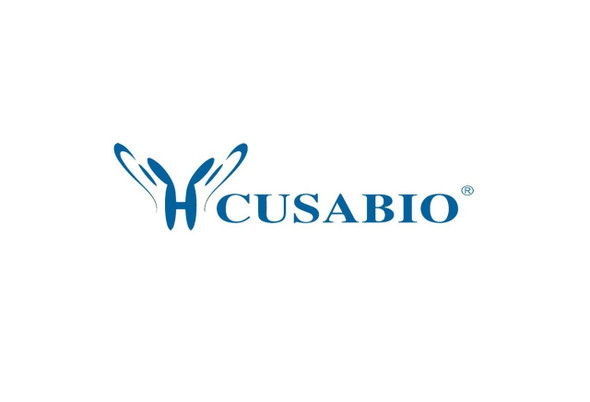Cusabio Human Recombinants
Recombinant Human ADP-ribose glycohydrolase MACROD1 (MACROD1) | CSB-BP860244HU
- SKU:
- CSB-BP860244HU
- Availability:
- 3 - 7 Working Days
Description
Recombinant Human ADP-ribose glycohydrolase MACROD1 (MACROD1) | CSB-BP860244HU | Cusabio
Alternative Name(s): MACRO domain-containing protein 1 O-acetyl-ADP-ribose deacetylase MACROD1 Protein LRP16 [Protein ADP-ribosylaspartate] hydrolase MACROD1 [Protein ADP-ribosylglutamate] hydrolase MACROD1
Gene Names: MACROD1
Research Areas: Cancer
Organism: Homo sapiens (Human)
AA Sequence: MSLQSRLSGRLAQLRAAGQLLVPPRPRPGHLAGATRTRSSTCGPPAFLGVFGRRARTSAGVGAWGAAAVGRTAGVRTWAPLAMAAKVDLSTSTDWKEAKSFLKGLSDKQREEHYFCKDFVRLKKIPTWKEMAKGVAVKVEEPRYKKDKQLNEKISLLRSDITKLEVDAIVNAANSSLLGGGGVDGCIHRAAGPLLTDECRTLQSCKTGKAKITGGYRLPAKYVIHTVGPIAYGEPSASQAAELRSCYLSSLDLLLEHRLRSVAFPCISTGVFGYPCEAAAEIVLATLREWLEQHKDKVDRLIICVFLEKDEDIYRSRLPHYFPV
Source: Baculovirus
Tag Info: N-terminal 10xHis-tagged and C-terminal Myc-tagged
Expression Region: 1-325aa
Sequence Info: Full Length
MW: 39.4 kDa
Purity: Greater than 85% as determined by SDS-PAGE.
Relevance: Removes ADP-ribose from asparatate and glutamate residues in proteins bearing a single ADP-ribose moiety (PubMed:23474714, PubMed:23474712). Inactive towards proteins bearing poly-ADP-ribose (PubMed:23474714, PubMed:23474712). Deacetylates O-acetyl-ADP ribose, a signaling molecule generated by the deacetylation of acetylated lysine residues in histones and other proteins (PubMed:21257746). Plays a role in estrogen signaling (PubMed:17893710, PubMed:17914104, PubMed:19403568). Binds to androgen receptor (AR) and amplifies the transactivation function of AR in response to androgen (PubMed:19022849). May play an important role in carcinogenesis and/or progression of hormone-dependent cancers by feed-forward mechanism that activates ESR1 transactivation (PubMed:17893710, PubMed:17914104). Could be an ESR1 coactivator, providing a positive feedback regulatory loop for ESR1 signal transduction (PubMed:17914104). Could be involved in invasive growth by down-regulating CDH1 in endometrial cancer cells (PubMed:17893710). Enhances ESR1-mediated transcription activity (PubMed:17914104).
Reference: "Macrodomain-containing proteins are new mono-ADP-ribosylhydrolases." Rosenthal F., Feijs K.L., Frugier E., Bonalli M., Forst A.H., Imhof R., Winkler H.C., Fischer D., Caflisch A., Hassa P.O., Luescher B., Hottiger M.O. Nat. Struct. Mol. Biol. 20:502-507(2013)
Storage: The shelf life is related to many factors, storage state, buffer ingredients, storage temperature and the stability of the protein itself. Generally, the shelf life of liquid form is 6 months at -20?/-80?. The shelf life of lyophilized form is 12 months at -20?/-80?.
Notes: Repeated freezing and thawing is not recommended. Store working aliquots at 4? for up to one week.
Function:
Involvement in disease:
Subcellular Location:
Protein Families:
Tissue Specificity:
Paythway:
Form: Liquid or Lyophilized powder
Buffer: If the delivery form is liquid, the default storage buffer is Tris/PBS-based buffer, 5%-50% glycerol. If the delivery form is lyophilized powder, the buffer before lyophilization is Tris/PBS-based buffer, 6% Trehalose, pH 8.0.
Reconstitution: We recommend that this vial be briefly centrifuged prior to opening to bring the contents to the bottom. Please reconstitute protein in deionized sterile water to a concentration of 0.1-1.0 mg/mL.We recommend to add 5-50% of glycerol (final concentration) and aliquot for long-term storage at -20?/-80?. Our default final concentration of glycerol is 50%. Customers could use it as reference.
Uniprot ID: Q9BQ69
HGNC Database Link: N/A
UniGene Database Link: N/A
KEGG Database Link: N/A
STRING Database Link: N/A
OMIM Database Link: N/A









